A wonderful nostalgic bake, lardy cake bridges the gap between a loaf of bread and a sweet and crumbly Danish pastry, delivering the best of both worlds. By combining brown sugar, lard, butter and fruit, this old fashioned favourite showcases traditional British bakes at their best.

Sticky sweet, studded with succulent sultanas and currants and deliciously buttery, you can’t go wrong with a lardy cake. Here’s how to bake this 19th century West Country classic to perfection.
I love collaborating with talented people, and this recipe is no exception. Caron Cooper, the charming owner of Fosse Farmhouse, a boutique B&B near Castle Combe, kindly walked me through the process of making her authentic lardy cake.
Caron’s passion for vintage treasures and traditional baking shines through in everything she does, including this recipe. For over 40 years, she’s run her beautiful B&B, creating a magical space filled with character and charm.
If you’re ever short on time, Caron offers her irresistible, homemade lardy cake to order — nothing like the mass-produced versions, this one’s made with love and care from scratch!
A special thanks to Visit Wiltshire for making this recipe possible. There are lots to explore in the beautiful county of Wiltshire in England, so check it out!
Why you’ll love this lardy cake recipe
- It tastes magnificent!
- Serve this to friends and family and they’ll be seriously impressed
- The caramel crunch of the outer layer is to die for
- The mix of flavours is superb, explaining the long-lasting appeal of this timeless classic
Equipment needed
There are a few important items that you will need for this lardy cake recipe:
- Mixing bowl
- 20x25cm (8x10in) baking tin
How to make this lardy cake


Gather all the ingredients.
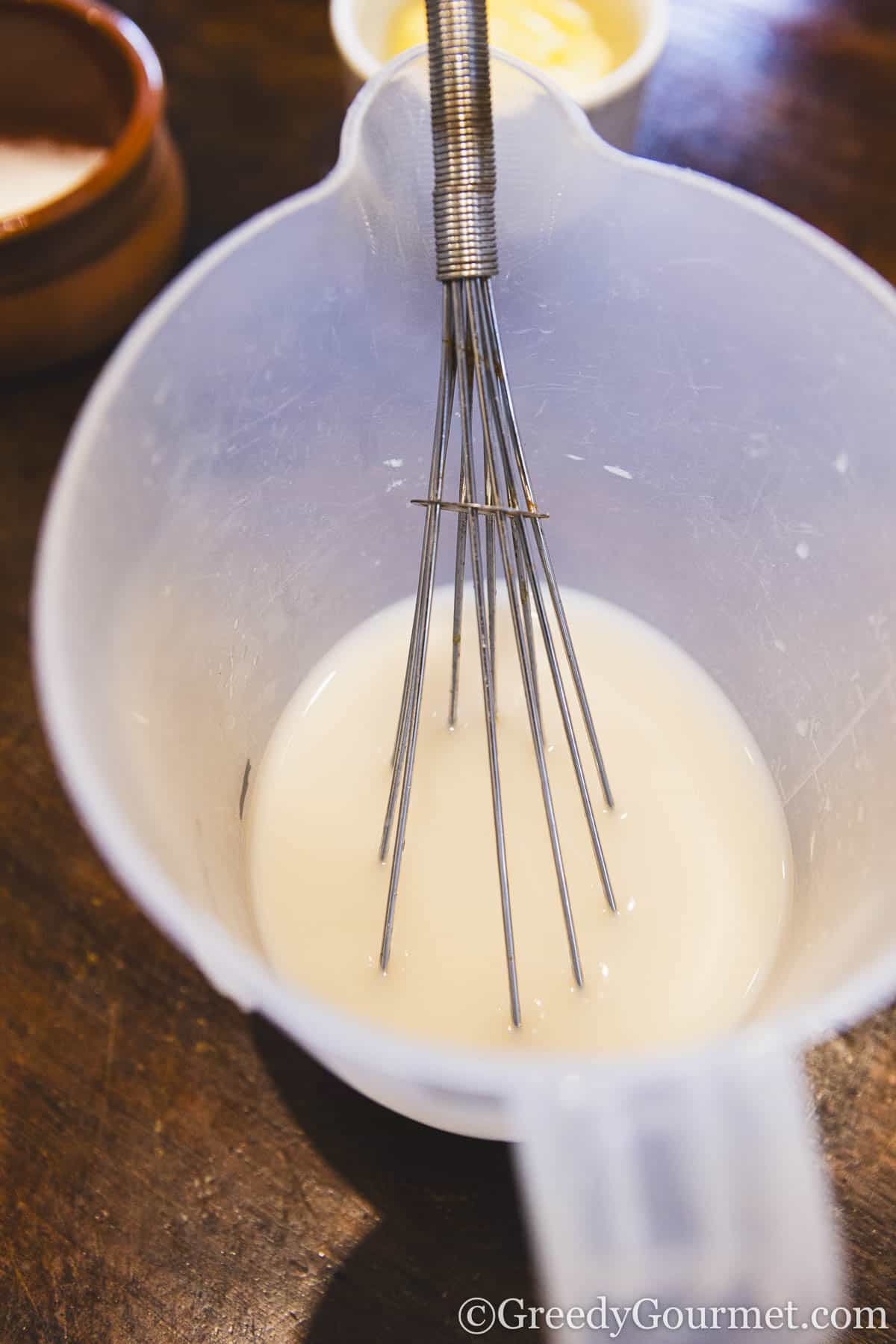

Prepare the fresh yeast.
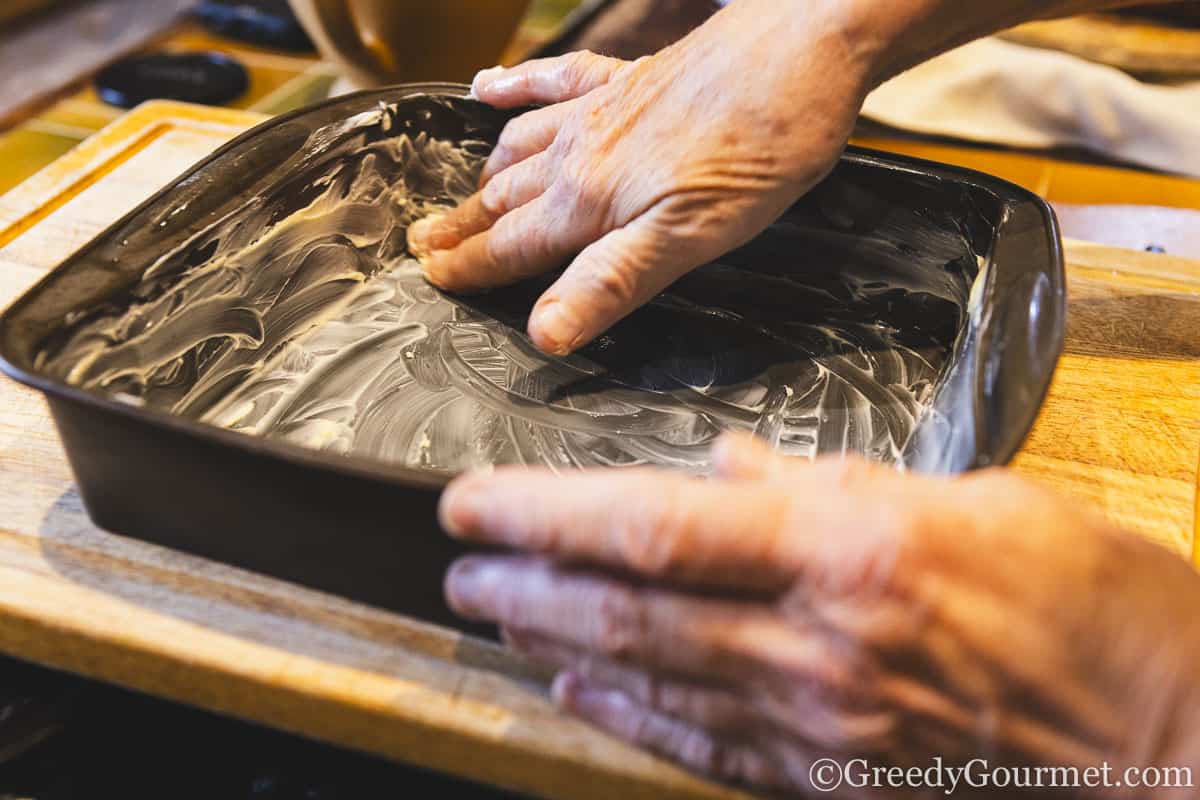

Grease a baking tin.
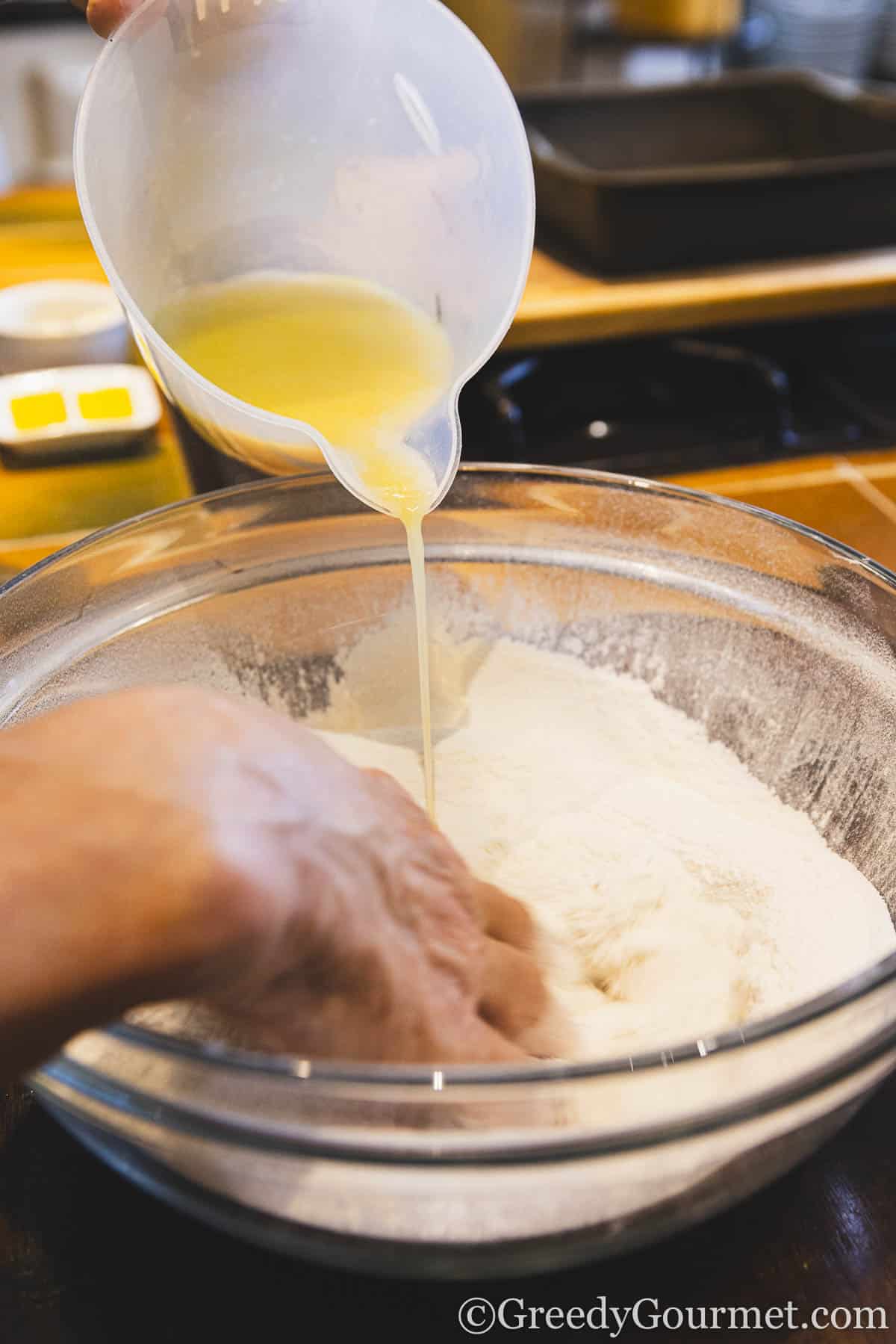

Combine the wet and dry ingredients.


Let the dough rest.
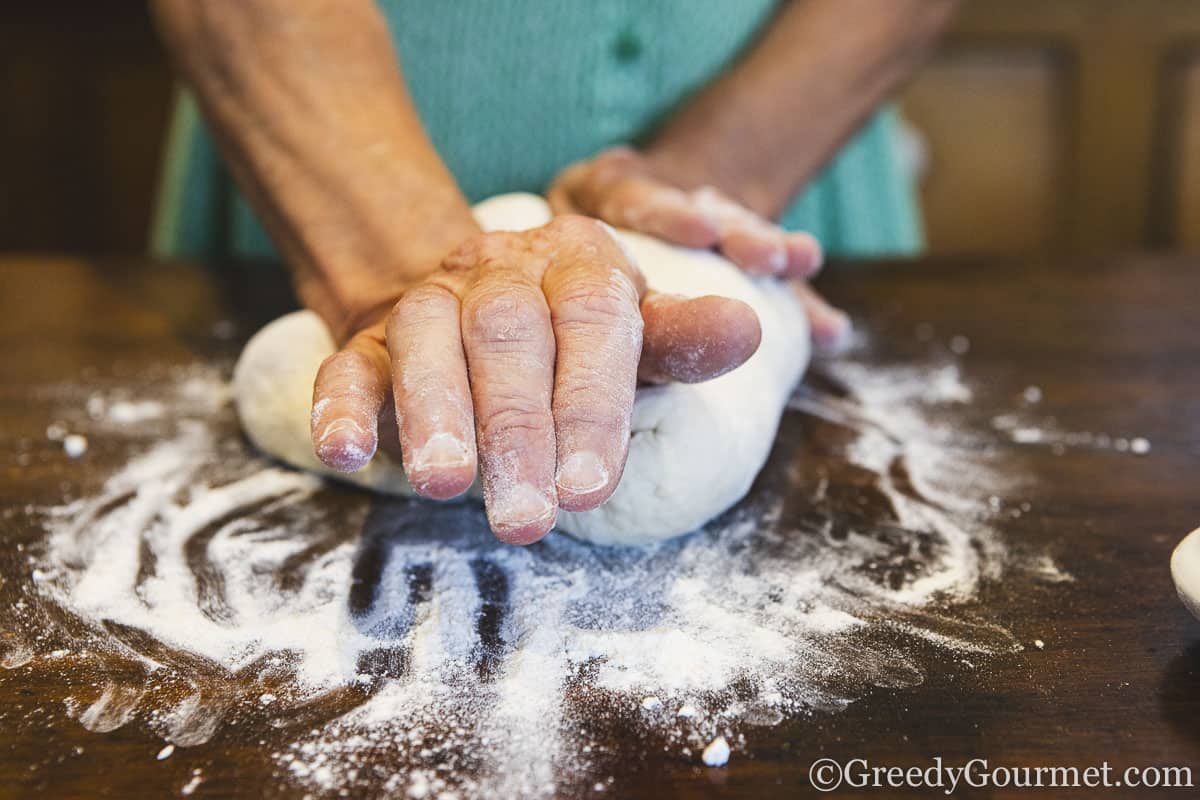

Knead the dough.
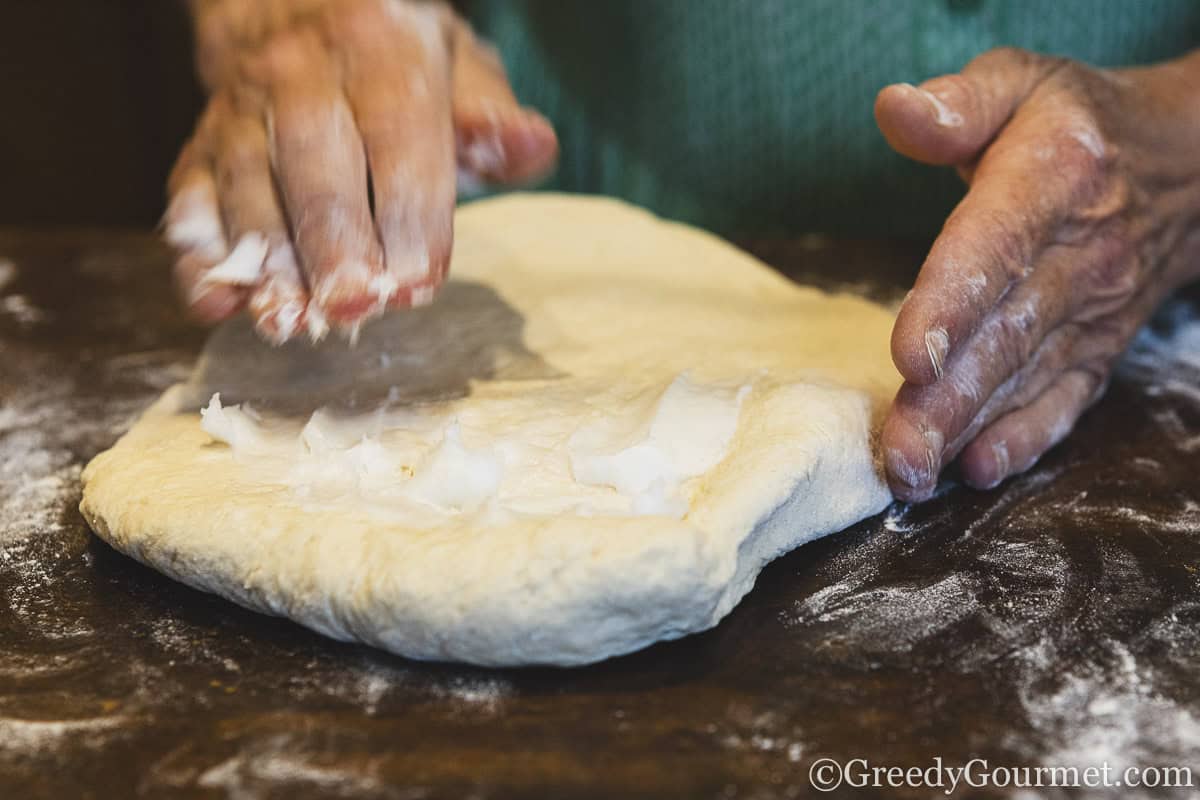

Flatten the dough and a spread a portion of lard evenly.
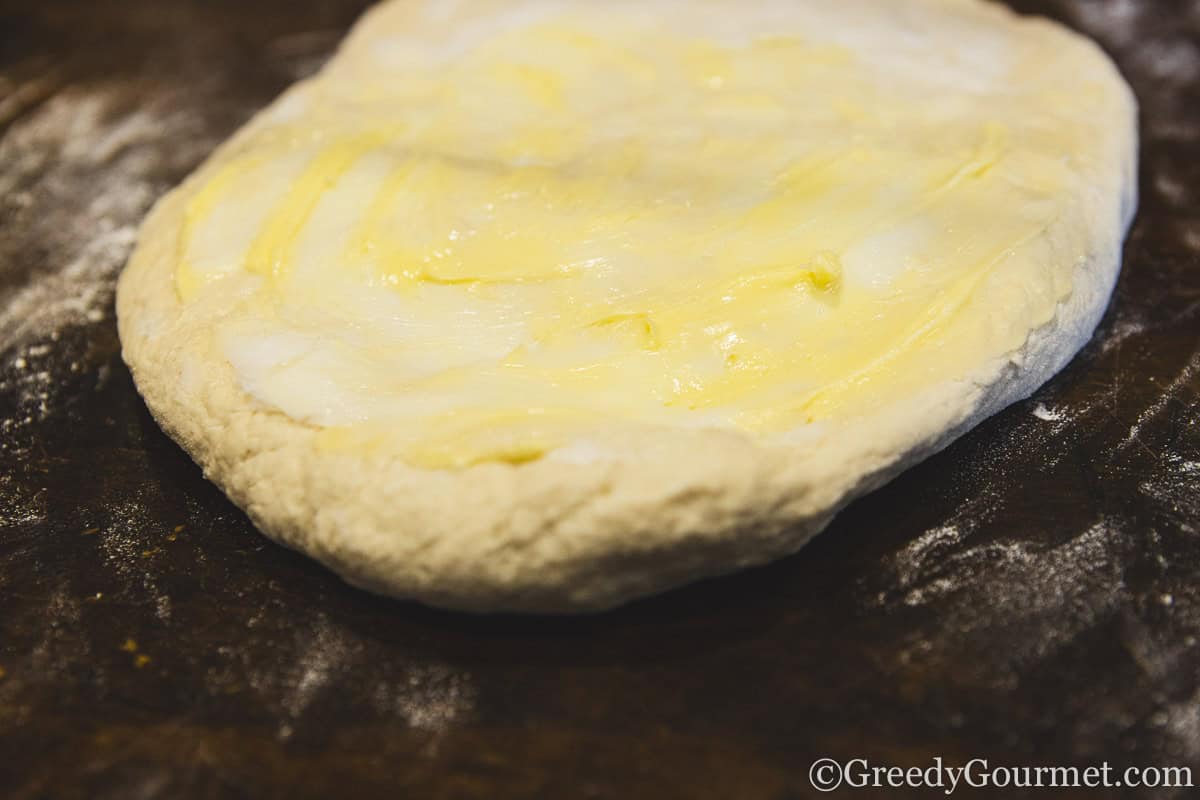

Add a layer of butter on top.
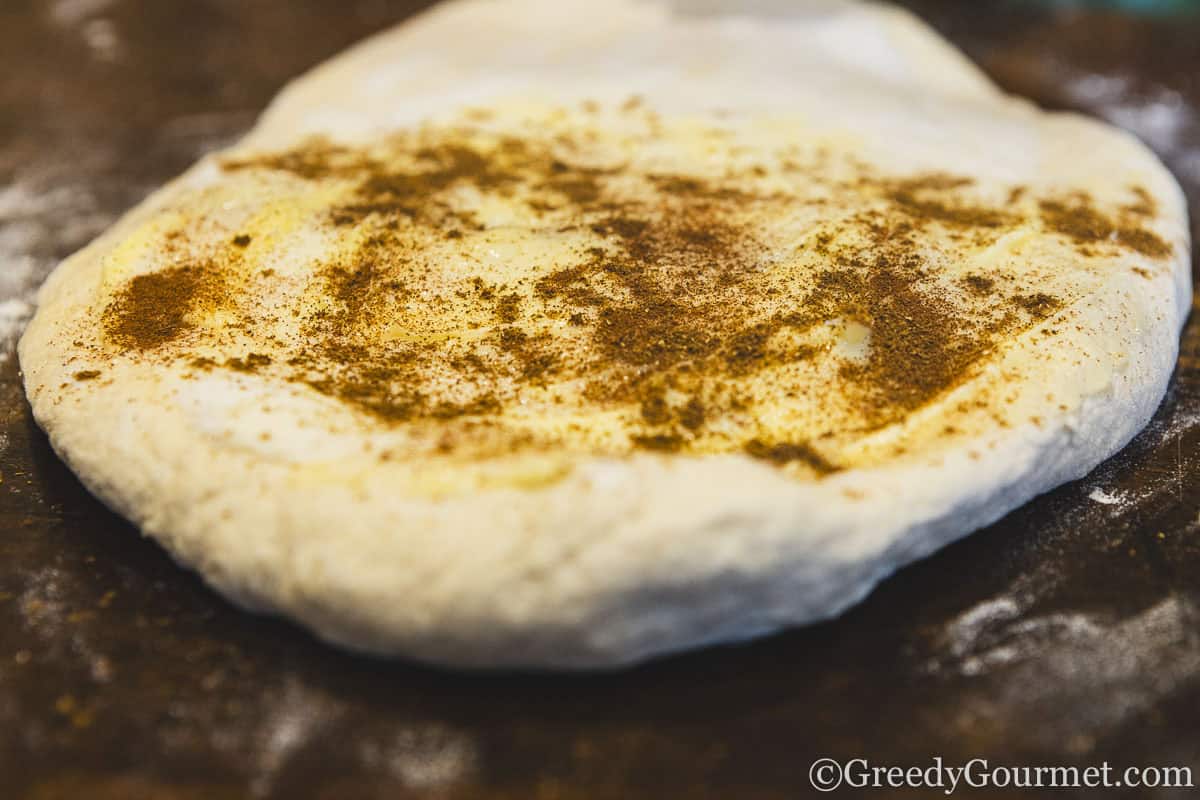

Sprinkle with spices.
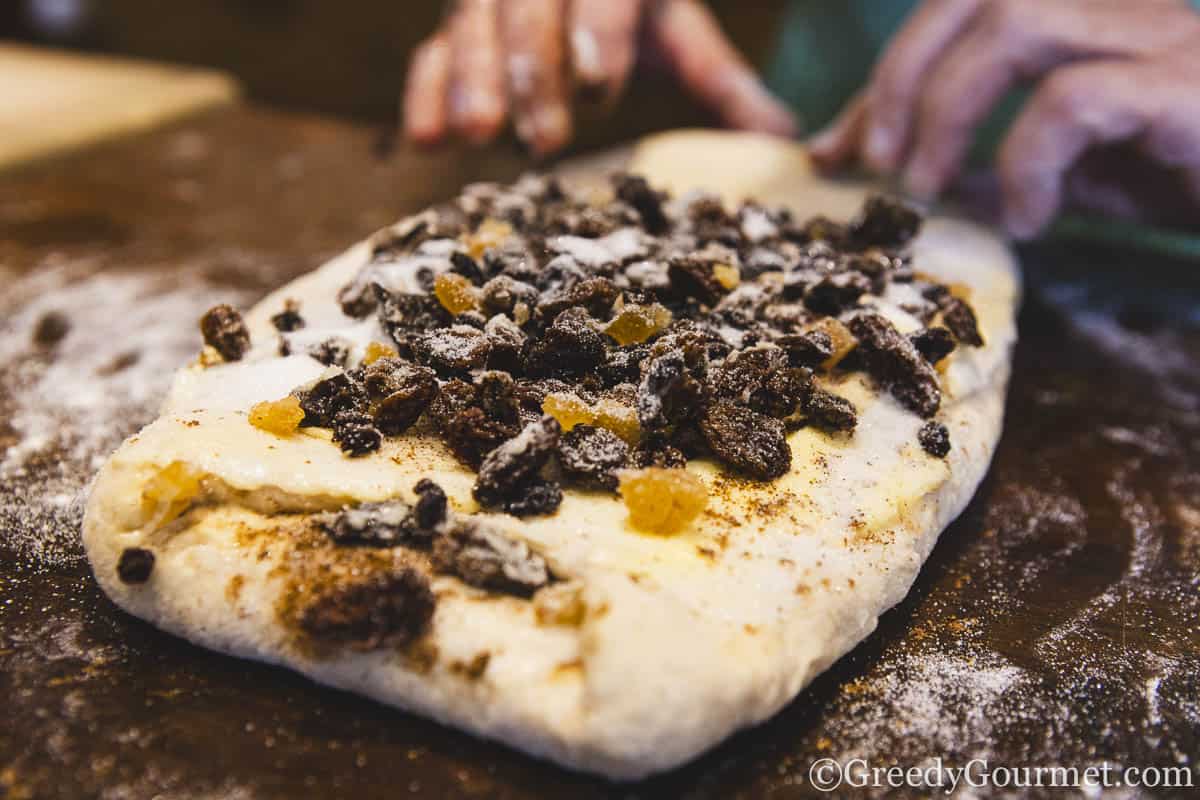

Add the dried fruit and sugar.
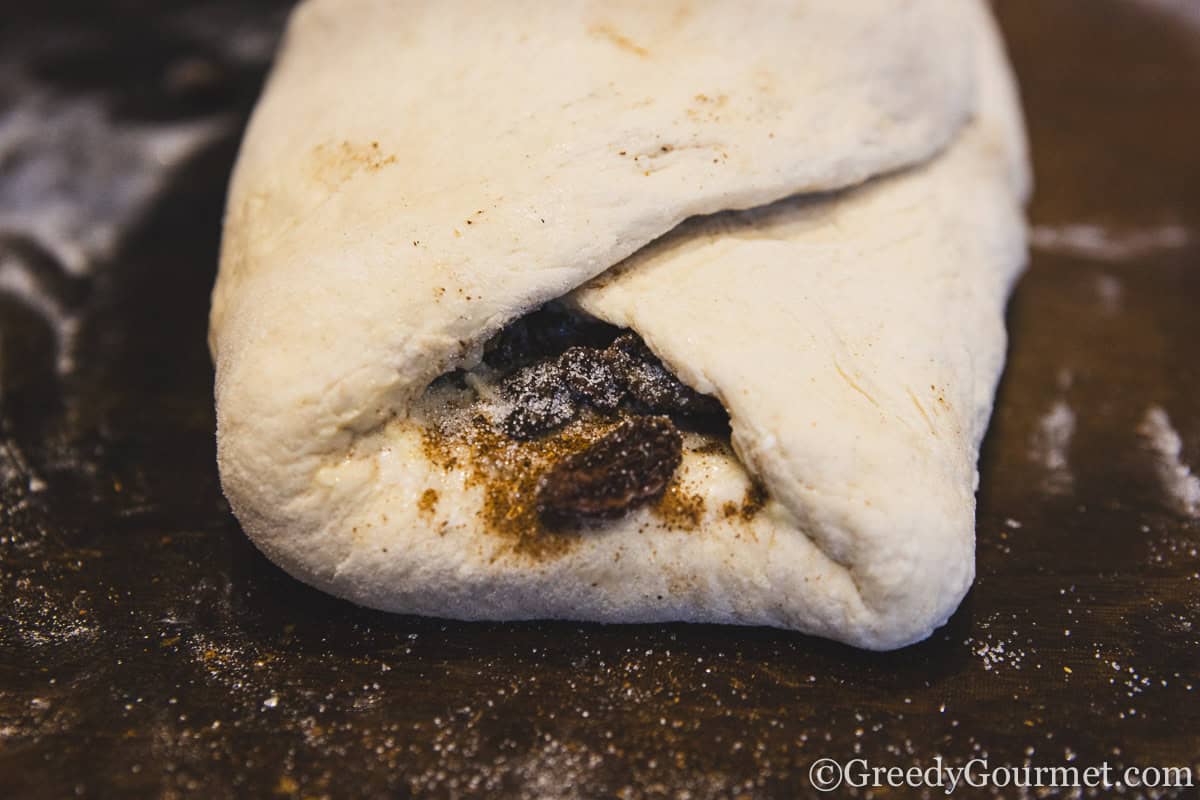

Roll the dough and repeat this process a few times until you have a layered cake. Bake until golden and crispy. Enjoy!
What to serve with lardy cake
Tea or coffee
Pair this easy lardy cake recipe with your favourite cup of tea or coffee.
Wine pairing
A sweet sherry or Madeira would be the perfect choice and would accentuate the flavours of your lardy cake. If you’re a fan of bubbles, prosecco, cava or champagne would also be delightful.
Variations to this recipe
Vegan Lardy Cake
To make a vegan version of this traditional bake, substitute lard with a plant-based fat like coconut oil or vegan margarine. Replace the butter with a vegan alternative, and use a flax egg (1 tablespoon ground flaxseed mixed with 3 tablespoons water) instead of yeast if desired.
Spiced Lardy Cake
Add a teaspoon of mixed spice to the flour when making the dough for a warmly spiced version. This pairs well with dried fruit like sultanas and currants, enhancing the cozy, comforting flavors of the lardy cake.
Nutty Lardy Cake
Incorporate a generous handful of chopped nuts, such as almonds or walnuts, into the dough or between the layers of dough and fruit. This adds a delightful crunch to the cake.
Citrus Twist
For a brighter flavor, add the zest of a lemon or orange to the dough. You can also substitute some of the mixed peel with fresh citrus peel for a more pronounced citrus note.
Chocolate Lardy Cake
For a more indulgent treat, sprinkle small cubes of chocolate or cocoa powder between the layers of dough and fruit. This variation adds a rich, chocolaty twist to the traditional method.


Popular Substitutions
- Lard: If you prefer not to use lard or are making the recipe vegetarian, you can substitute it with butter or vegetable shortening. This will still give the cake a rich flavor, though it might lack some of the traditional baking characteristics of a lardy cake. For a more authentic taste, consider rendering your own lard from pork fat. This will give your lardy cake recipe a true bakery-style quality.
- Flour: The recipe calls for strong white bread flour, which gives the soft dough its structure and elasticity. If you need a gluten-free version, substitute with a high-quality gluten-free flour blend. You may need to add a binding agent like xanthan gum to help the dough hold together.
- Yeast: While dried yeast is commonly used, you can substitute with fresh yeast for a more traditional kind of bake. If using fresh yeast, double the amount specified in the recipe and dissolve it in warm water with a pinch of caster sugar before adding it to the mixture.
- Sugar: The recipe typically uses caster sugar and granulated sugar. However, you can substitute brown sugarfor a deeper flavor. Alternatively, for a unique twist, try using golden syrup to sweeten and enrich the surface of the dough.
- Dried Fruit: Traditional lardy cakes often include sultanas, currants, and mixed peel. Feel free to customize with your favorite dried fruit such as raisins, dried apricots, or cherries. You can even sprinkle in some mixed spice to add warmth and depth to the flavor.
- Butter: While lard is the traditional fat, butter can be used alongside or instead of lard for a slightly different taste and texture. This will also make the dough richer and more buttery.
Top tips
- Be sure to preheat the oven before baking the cake. It’s important for the consistency of the baking process.
- You can use a stand mixer with dough hook attachment to knead the dough.
- If you go for the traditional kneading method, be sure to knead the dough on a floured work surface.
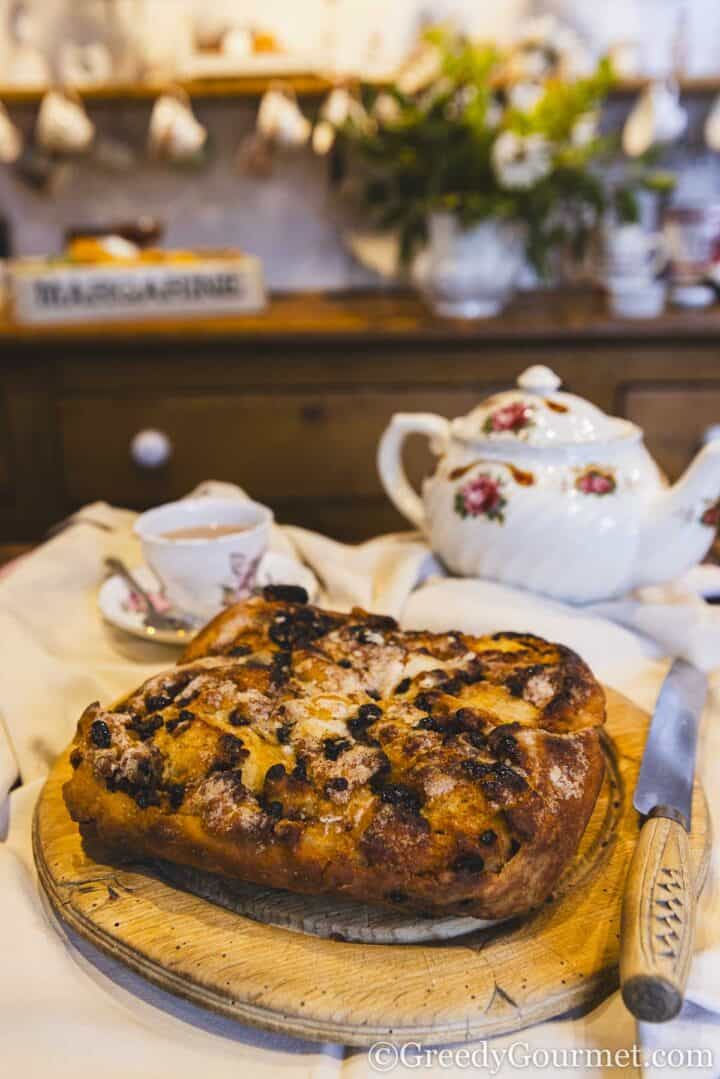

What is lardy cake?
Lardy cake is a not actually a cake… it’s more like a sweet bread. It’s made using lard, as the name implies… lot’s of it! It also contains sugar, sultanas and mixed peel, giving it that wonderful tangy sweet combination that you so often find in classic British desserts.
The secret to a good lardy cake is the kneading process. Lardy cakes are kneaded for around ten minutes before being rolled out and folded a few times. This is known as ‘lamination’ and helps to create layers within the dough.
Aside from lard, sugar and extra butter, lardy cake ingredients also include flour and yeast. The yeast dough is baked in a pan until golden brown.
What are the origins of lardy cake?
This classic British pudding dates all the way back to the mid 1800s century. Although its exact origins are unknown, it’s thought to have been invented in the West Country, specifically in the county of Wiltshire.
In Wiltshire, locals say that Lardy Cake was traditionally eaten in the countryside by workers in the fields who enjoyed it as a mid-afternoon snack.
Why is it called a lardy cake?
It’s called lardy cake because it’s made using lard in place of butter. It’s also sometimes referred to as lardy bread, lardy Johns, dough cake and fourses cake.
Where can I buy lard?
Lard is widely available in all good supermarkets and grocery stores. Just look for it next to the butter in the dairy section.
What’s the difference between dripping cake and lardy cake?
These two old-fashioned desserts are very similar… except for one key ingredient.
While lardy cakes use lard as the central ingredient, dripping cake uses beef dripping. Traditionally it was made from the leftover juices of a Sunday roast.
Beef in a cake? If you think it sounds gross, you should try it!
Do you eat lardy cake hot or cold?
Lardy cake is best eaten warm. I recommend letting it cool slightly out of the oven before tucking in!
You can, of course, eat lardy cake cold if you prefer. Or you can reheat it using the methods stated below.
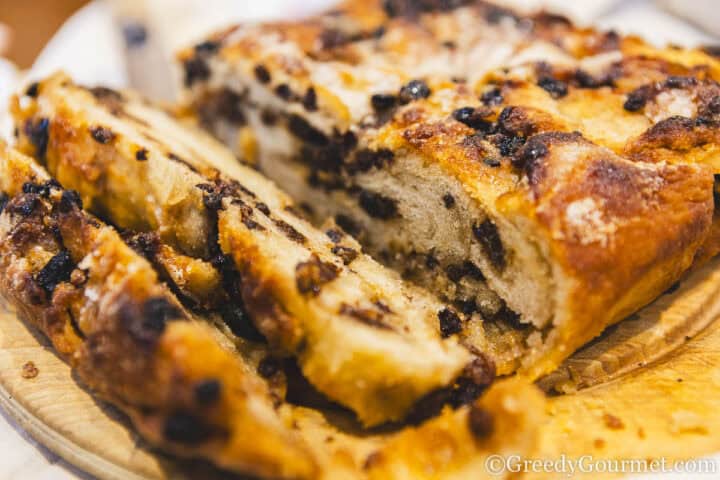

How do you store lardy cake?
- Once your lardy cake has cooled completely on a baking tray, it should be stored properly to maintain its freshness.
- Place the lardy cake in an airtight container to keep it soft and moist. Ensure that the container is sealed well to prevent the cake from drying out.
- If you don’t have an airtight container, you can wrap the lardy cake in cling film or greaseproof paper and then store it in a cool, dry place. This will help to preserve the texture of the soft dough.
- For longer storage, the lardy cake can be frozen. Wrap it tightly in cling film and then in a layer of aluminum foil before placing it in the freezer. This method helps to maintain the cake’s moisture and flavor.
How do you reheat lardy cake?
- To enjoy your lardy cake warm, preheat your oven to 150°C (300°F).
- Place the cake on a baking tray lined with baking parchment to prevent sticking.
- Cover the surface of the cake lightly with greaseproof paper or aluminum foil to prevent it from browning too much during reheating.
- Heat the lardy cake in the oven for about 10-15 minutes, or until it is warmed through. The reheating process will revive the dough and make the cake as delightful as when it was freshly baked.
- If you’re in a hurry, you can also reheat individual slices in the microwave. Place a slice on a microwave-safe plate and cover it with a damp paper towel. Heat on medium power for about 20-30 seconds, or until warm. Be careful not to overheat, as this can dry out the cake.


Do I need a stand mixer to knead dough for lardy cake?
I like the idea of going old school and kneading with your hands, the old fashioned way.
If you prefer a quicker and easier method, use a stand mixer with a dough hook attachment.
More classic dessert recipes
If these British classic has inspired you to try more old fashioned recipes, you’re in luck! I’ve got a whole host of golden oldies for you to try your hand at.
📖 Recipe


Lardy Cake Recipe
Total Time: 2 hour 15 minutes
Yield: 10 servings 1x
Diet: Low Salt
Description
This Lardy Cake recipe, features layers of soft dough with lard, dried fruits, and spices, creating a buttery British dessert that’s perfect for sharing.
Ingredients
Units
Scale
- 1 ½ tsp dried yeast and a pinch of sugar
- 300ml water, warmed
- 450g strong white flour
- 1 tsp salt
- 75g lard, diced
- 75g butter, diced
- 175g mixed sultanas and currants
- 50g chopped mixed peel
- 50g sugar
Instructions
- Grease a 20x25cm (8x10in) tin.
- In a small bowl, sprinkle the yeast into the warm water with a pinch of sugar.
- Leave the yeast mixture for 15 minutes until it becomes frothy.
- In a separate bowl, combine the flour and salt.
- Rub 15g (½oz) of lard into the flour mixture.
- Add the frothy yeast mixture to the flour mixture.
- Mix until a dough forms, ensuring it cleans the sides of the bowl. Add more water if necessary.
- Transfer the dough to a floured surface.
- Knead the dough for 10 minutes until smooth and elastic.
- Place the dough in a bowl and cover with a tea towel.
- Let the dough rise in a warm place for 1 hour or until it has doubled in size.
- Turn the risen dough onto a floured surface.
- Roll the dough into a rectangle about 50mm (¼in) thick.
- Dot one-third of the remaining lard and butter over the dough.
- Sprinkle one-third of the fruit, peel, and sugar over the dough.
- Fold the dough into thirds: fold the bottom third up, then fold the top third down.
- Give the dough a quarter turn and repeat the process two more times.
- Roll the dough out to fit the prepared tin.
- Place the dough in the tin, cover, and leave in a warm place for 30 minutes until puffy.
- Preheat the oven to 220°C/425°F/Gas 7.
- Score the top of the dough.
- Bake for about 30 minutes, until the bread is well-risen and golden brown.
- Serve immediately or allow to cool before serving.
- Prep Time: 1 hour 45 minutes
- Cook Time: 30 minutes
- Category: Cake
- Method: Bake
- Cuisine: British
Nutrition
- Serving Size:
- Calories: 361
- Sugar: 15.7 g
- Sodium: 236.9 mg
- Fat: 14.2 g
- Saturated Fat: 6.8 g
- Trans Fat: 0 g
- Carbohydrates: 54.2 g
- Fiber: 2.6 g
- Protein: 5.6 g
- Cholesterol: 23.3 mg